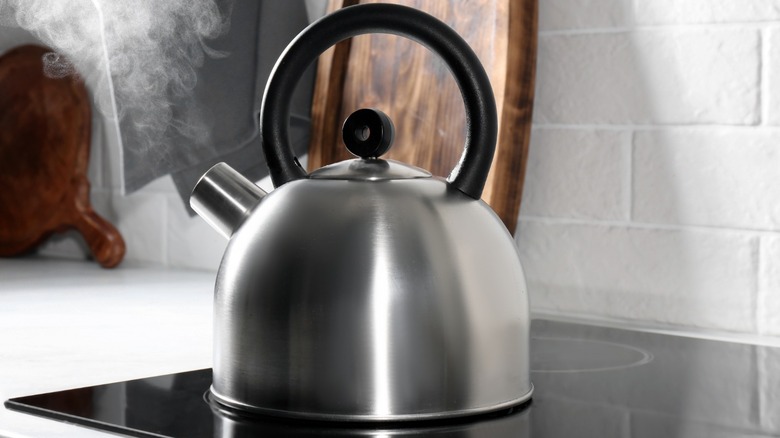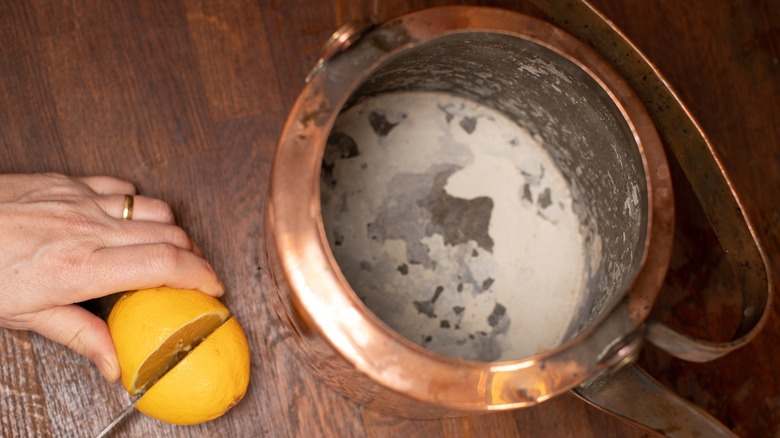How To Clean A Tea Kettle For Fresher Brews
Cleaning the tea kettle is one of those kitchen chores that can often fall by the wayside, even for daily tea drinkers. But keeping your kettle clean and fresh can be an underrated key to better cups — and even easy weeknight dinners. Fortunately, it's relatively fast and easy to do.
The first step in cleaning your tea kettle is called descaling, or removing built-up deposits of minerals present in most water, especially the hard variety. To do so, fill the kettle halfway with water and fill the rest with a mildly acidic solution like white vinegar or lemon juice. Bring this to a boil, then let cool before rinsing and scrubbing with a sponge and dishwashing liquid. Those who need some extra scrubbing power for issues like burnt spots can also use a bit of baking soda — a mildly abrasive, natural cleaning product. Rinse the kettle clean, and then fill it with clean water before boiling a final time to remove any remaining cleaning product or mineral buildup.
Depending on how often you're using your kettle and the type of water you put in it, you should repeat this process every one to three months. However, you can avoid a great deal of cleaning by simply rinsing and drying your kettle between uses.
Why cleaning your tea kettle is so important
Those using electric kettles will also need to perform regular cleaning. While you can start by boiling water with vinegar or lemon juice and rinsing, just like with a traditional kettle, additional steps may vary from there. Water filters, if they're present, should be cleaned according to the manufacturer's specified process, and any accessible parts should be removed and gently washed. Models with particularly difficult-to-reach areas can be cleaned by adding a tablespoon or two of citric acid to the boiling water and letting it sit, followed by several cycles of water to rinse the kettle clean.
You may be wondering why cleaning your kettle is even necessary — after all, you're just boiling water inside, right? While that may be true, scale buildup can lead to an unpleasant flavor in your boiled water, as well as gradual damage to the device itself. It also makes your kettle less efficient, as the heating element must use more energy to bring water to a boil. In some metal kettles, extended exposure to moisture without cleaning can even lead to rust, not to mention potential bacteria or mold growth (not all of which is rendered safe by boiling). None of the above, along with any dust or other substances that have worked their way inside, make for an ideal cup of tea.

